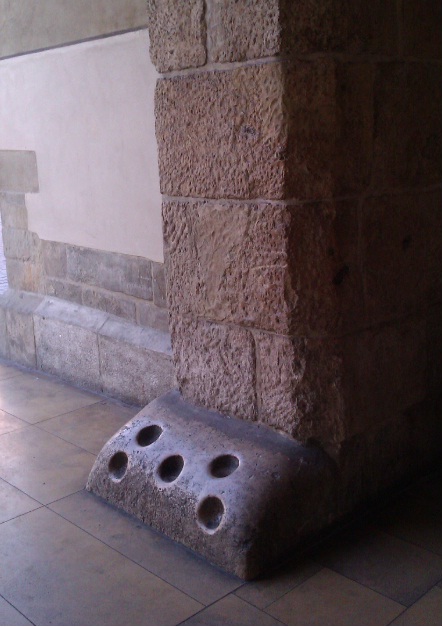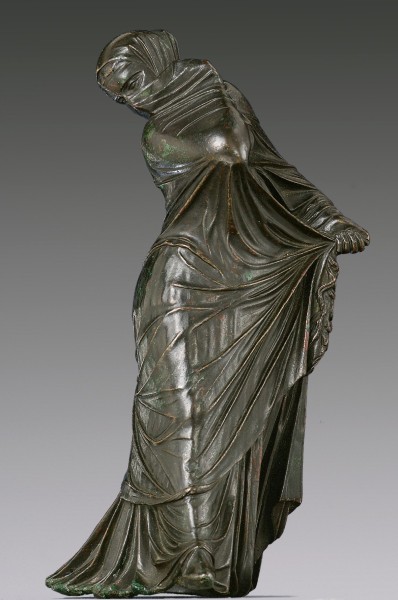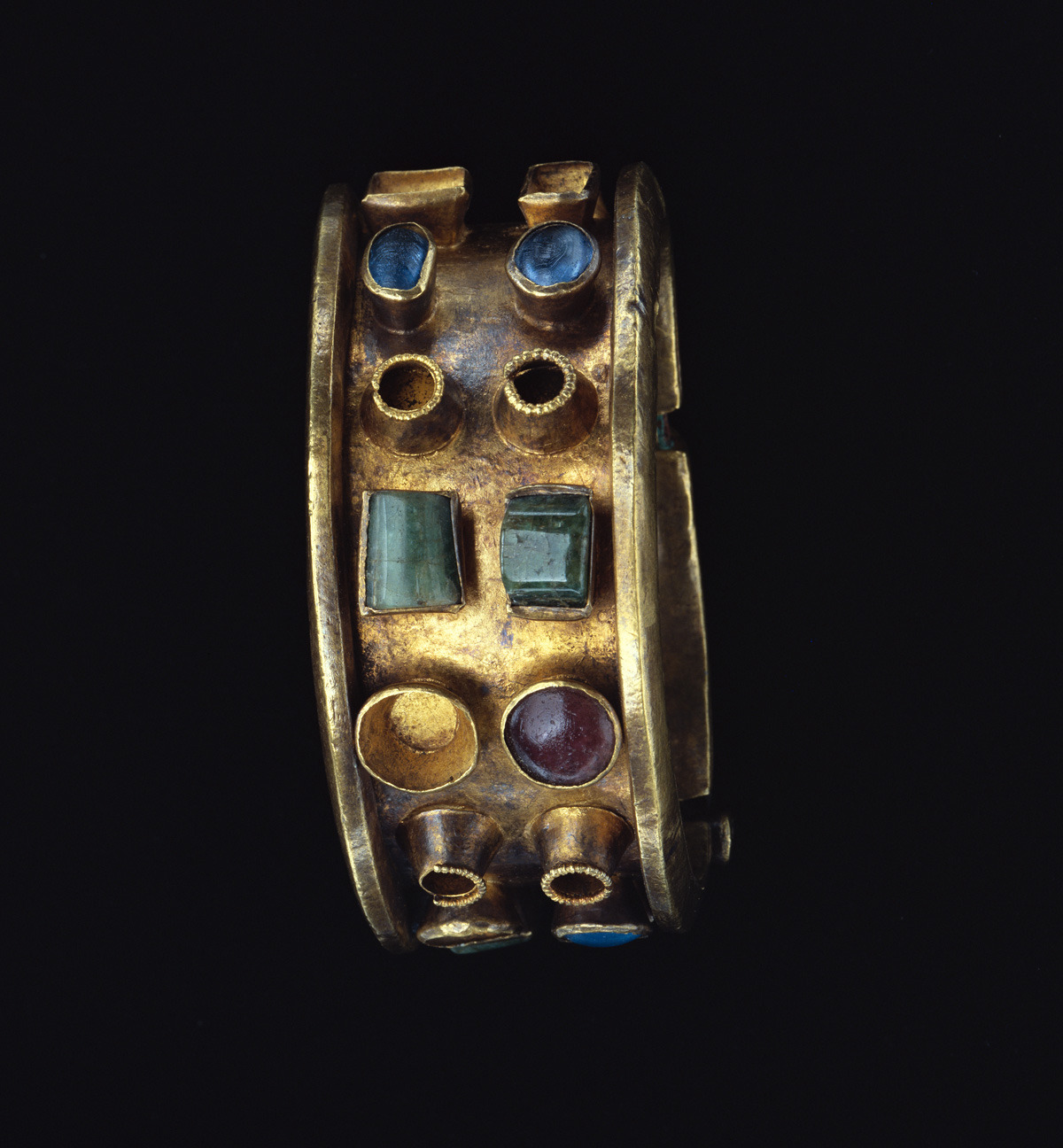 Before 19th century and gas lamps all of the cities were very dark during nights. Only the torches were sources of light. However torches - were not comfortable to use. They quckly went off, were dangerous in wooden architecture and were able to painfully burn the user.
Before 19th century and gas lamps all of the cities were very dark during nights. Only the torches were sources of light. However torches - were not comfortable to use. They quckly went off, were dangerous in wooden architecture and were able to painfully burn the user.So to avoid the problems, most all of the buidling had special stone holes where a person with torch could have input the torch and put out the flames. While walking in Kraków you can still find few examples of those old fashion extinguishers. One of them, from 15th century can be found on each corner of Cloth Hall (Sukiennice).
 As speaking of Kraków - did you know that this beautiful city sleeps on one enormours mammoth grave? In 1967 one of the newly residents started to build his house few meters from mound Kościuszki. Suprisingly he have found few giant bones. Quickly after official excavation begun. First excavations showed bones of 89 mammoths which died aproximetly 24 000 years ago. Archeologist have found also early humans hunting tools. Many of the bones shows cuts made of stone knives.
As speaking of Kraków - did you know that this beautiful city sleeps on one enormours mammoth grave? In 1967 one of the newly residents started to build his house few meters from mound Kościuszki. Suprisingly he have found few giant bones. Quickly after official excavation begun. First excavations showed bones of 89 mammoths which died aproximetly 24 000 years ago. Archeologist have found also early humans hunting tools. Many of the bones shows cuts made of stone knives.Soil in Kraków is the biggest source of mammoths bones in the world! However only few percent of terrain was examined and it is believed that the mound itself is unbelievely big grave of those prehistoric animals.
It took four ages to confirm that they are not dragon bones but prehistoric whale tusk, woolly rhino skull fragment and part of mammoth leg. They were found in Vistula (Wisła) river in aproximetly 14-15th century and hunged as a proof of Wawel Dragon.
 Kraków is also famous by one more world-class prehistoric artifact. Here, you can find the only in the world perfectly preserved body of wolly rhino. It is complete, with skin, internal organs and soft tissue. The discovery was made in 1929 in a village in contemporary Ukraine, about 100 km to the southeast of Lvov. The specimen is a young female that died about 30 thousand years ago.
Kraków is also famous by one more world-class prehistoric artifact. Here, you can find the only in the world perfectly preserved body of wolly rhino. It is complete, with skin, internal organs and soft tissue. The discovery was made in 1929 in a village in contemporary Ukraine, about 100 km to the southeast of Lvov. The specimen is a young female that died about 30 thousand years ago.Cracow is one of the most beutiful cities in the world, so remember that those three stories are only small part of mysteries that you may found in gem of Poland. If you would like to visit the city, please follow the link to help find best hotels.



